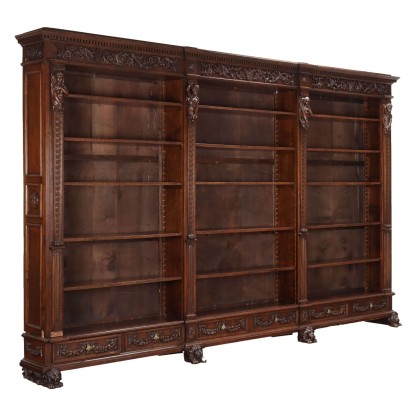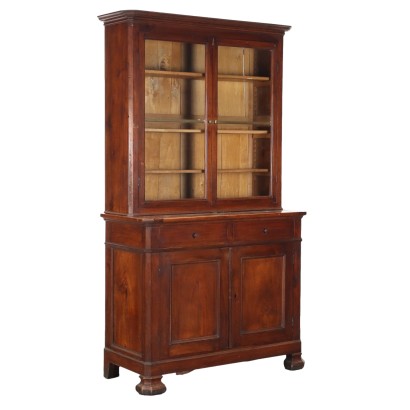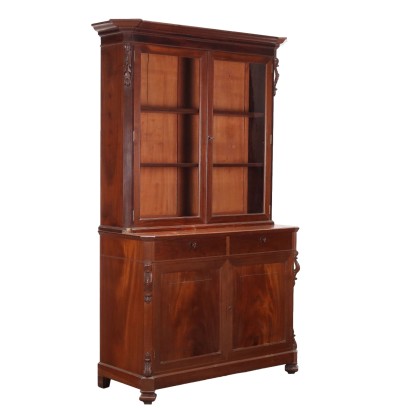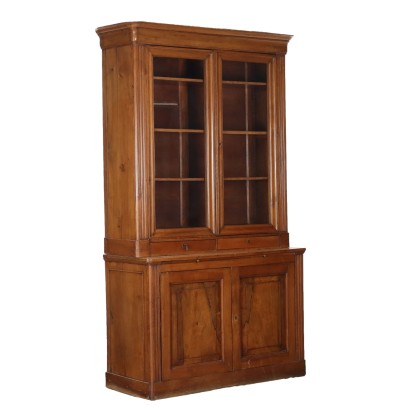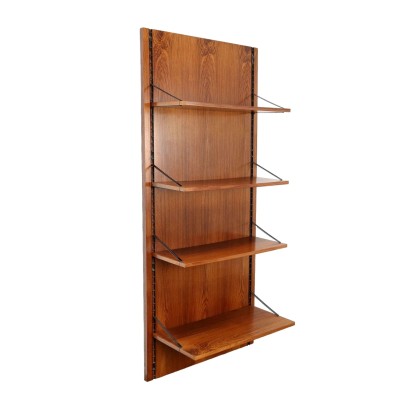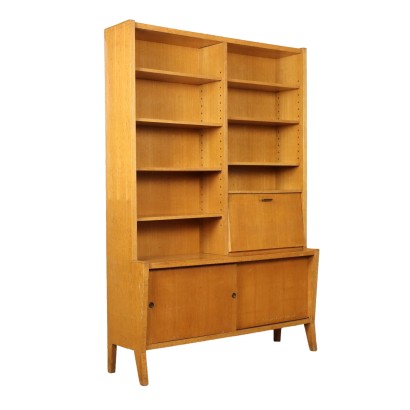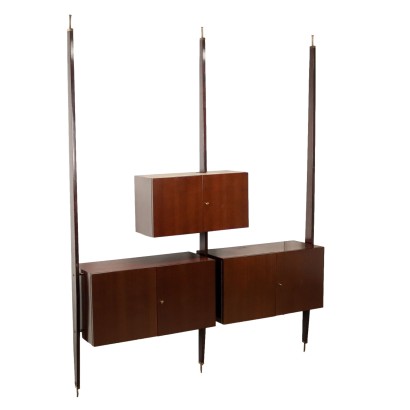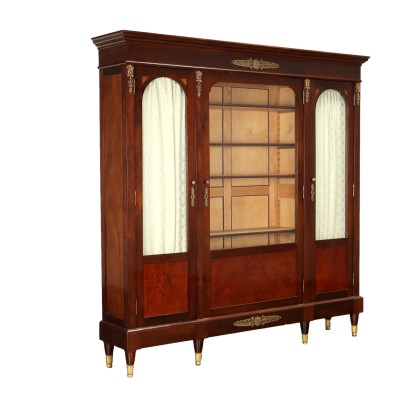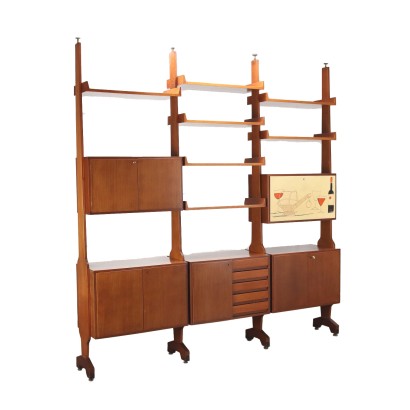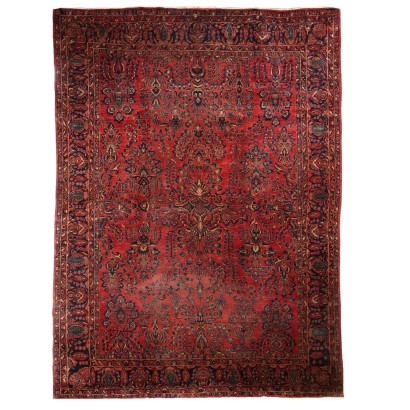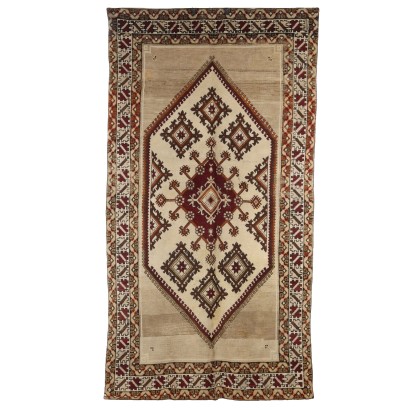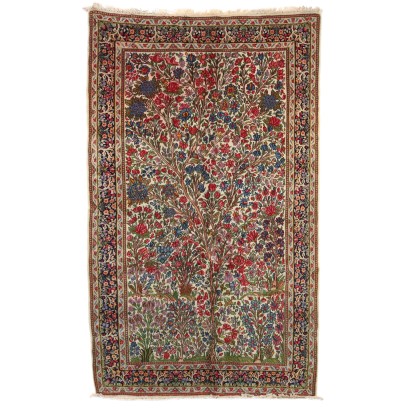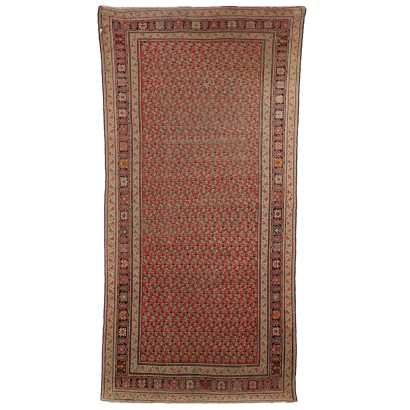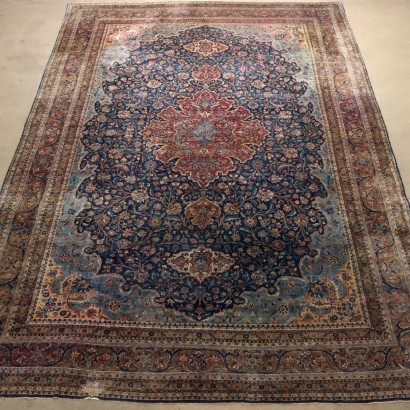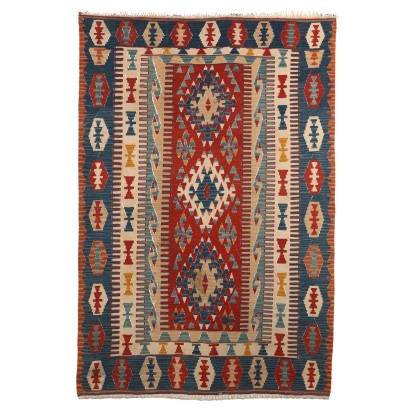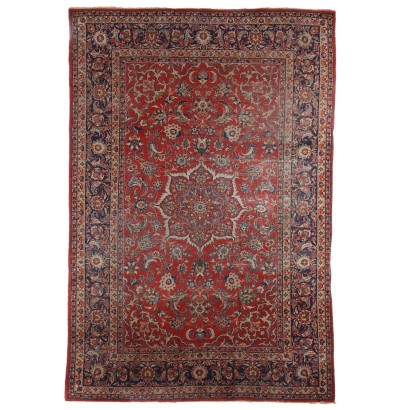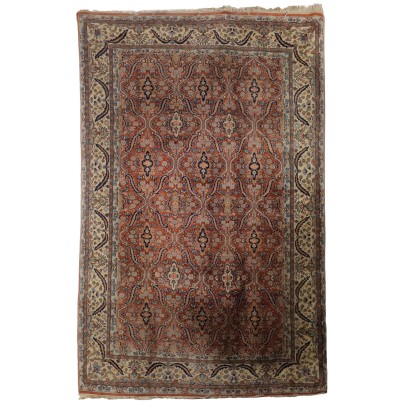Antique Bookcase Neo-Renaissance Walnut Decorations XX Century - Italy, Mid XX Century
Features
Italy, Mid XX Century
Style: Neo-Renaissance Revival
Age: 20th Century / 1901 - 2000
Origin: Italy
Main essence: Walnut
Description
Large open bookcase in neo-Renaissance style, composed of three bays contained by four uprights carved at the top of the pilasters with female and male caryatids, carved leafy scrolls in classical style decorate the hat and floral festoons the support base in which six drawers are inserted; the feet are carved with lion protomes, the shelves are adjustable thanks to the racks, gilded bronze handles on the drawers.
Product Condition:
Product that due to age and wear may require restoration and polishing. We try to present the real condition of the furniture as completely as possible with the photos. If some details are not clear from the photos, what is reported in the description is valid.
Dimensions (cm):
Height: 251
Width: 401
Depth: 44
Additional Information
Style: Neo-Renaissance Revival
Stylistic revival, of the 20th century, of the forms typical of the Renaissance style.
This is a style that re-proposes, looking at the grandeur of the past, decorative motifs and ornaments typical of the 16th century.
Masks, frames, columns carved with herms that make up architectural structures typical of Renaissance palaces, are the elements that characterize the neo-Renaissance style.
These elements will remain in the production of furnishings until the early 1900s, contaminating themselves with floral elements.
Find out more about the Neo-Renaissance with our insights:
A Milanese library between Belle Epoque and Fascism
The Austrian taste of Baroque
Gothic sculpture
Art Déco
Neoclassical architecture
Age: 20th Century / 1901 - 2000
20th Century / 1901 - 2000Main essence: Walnut
Walnut wood comes from the plant whose botanical name is juglans regia , probably originally from the East but very common in Europe. Light or dark brown in color, it is a hard wood with a beautiful grain, widely used in antique furniture. It was the main essence in Italy throughout the Renaissance and later had a good diffusion in Europe, especially in England, until the advent of mahogany. It was used for solid wood furniture and sometimes carvings and inlays, its only big limitation is that it suffers a lot from woodworm. In France it was widely used more than anything else in the provinces. In the second half of the eighteenth century its use decreased significantly because mahogany and other exotic woods were preferred.Other customers have searched:
Consulta anche le migliori librerie e vetrine su FineArt:
Leggi di più
Libreria 'Life' Roberto Monsani per AcerbisLibreria, Giuseppe Speluzzi, Milano, ultimo quarto XIX secolo
Libreria anni '50 manifattura italiana
Libreria anni '60
Sideboard '503' Gianfranco Frattini per Bernini
Mobile Mario Vender anni '60
Trumeau Queen Anne, Inghilterra, 1705 ca.
Sull'antiquariato in generale dai un'occhiata anche a:
Classic Monday: da un pezzo dei nostri magazzini alla storia dell'antiquariato
L'antiquariato dalla A alla Z: il Dizionario dell'Antiquariato
Il dizionario dell'antiquariato - Lastronatura
Il dizionario dell'antiquariato - Mascherone
Il dizionario dell'antiquariato - Natura morta
Il dizionario dell'antiquariato - Opificio
Il dizionario dell'antiquariato - Pastiglia
Il dizionario dell'antiquariato - Savonarola
Il dizionario dell'antiquariato - Rosone
Intaglio barocco con motivo a ricciolo

